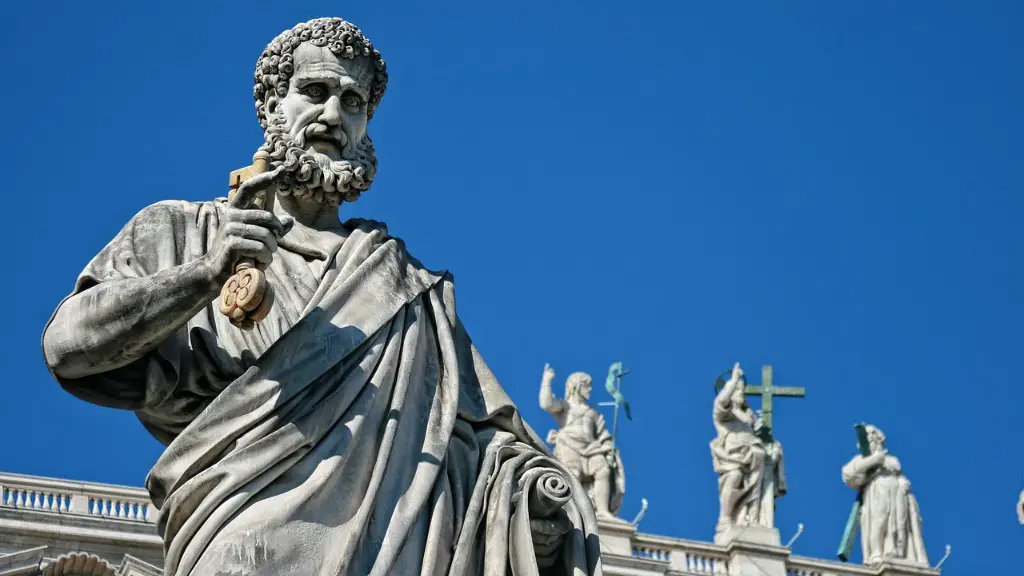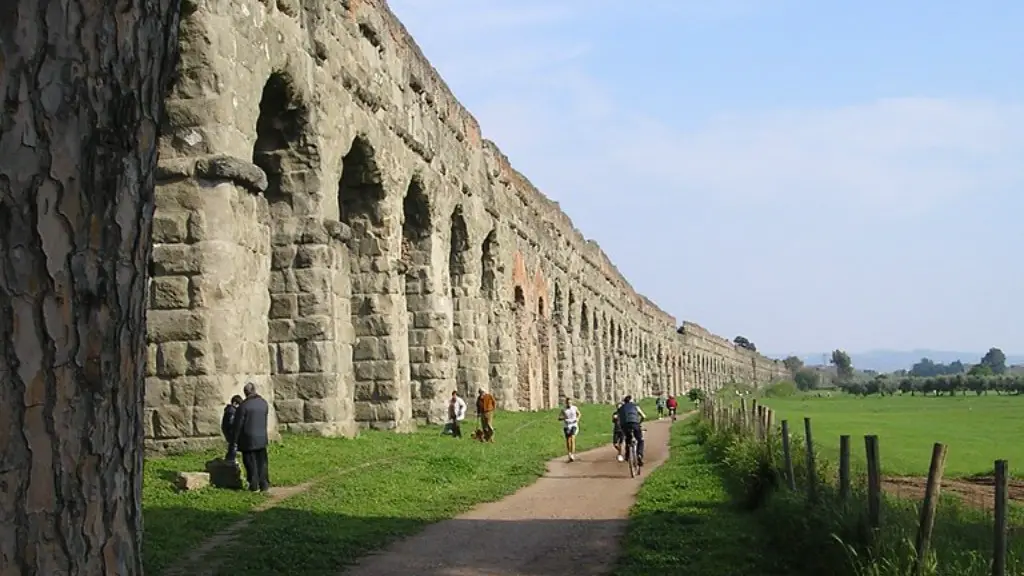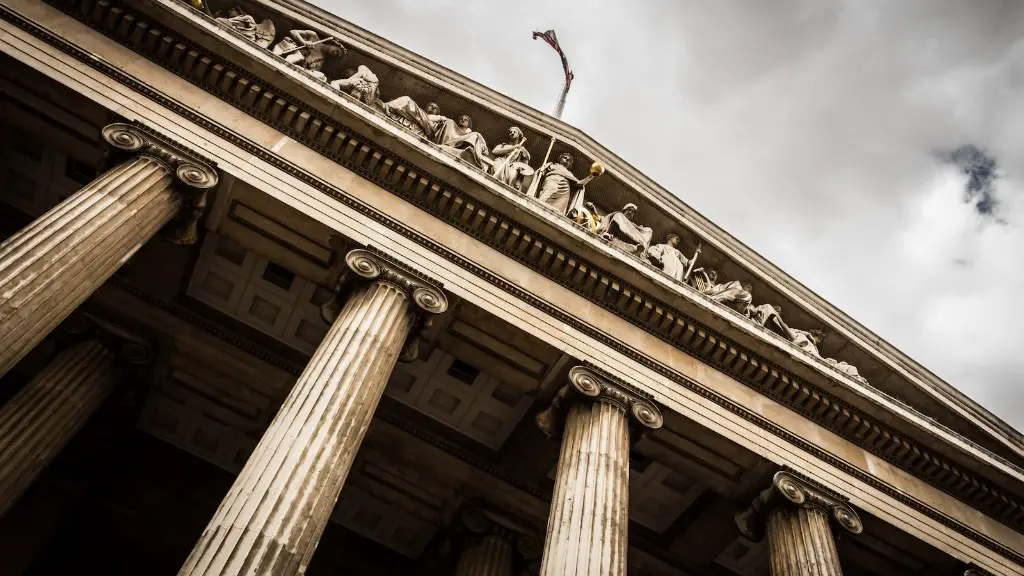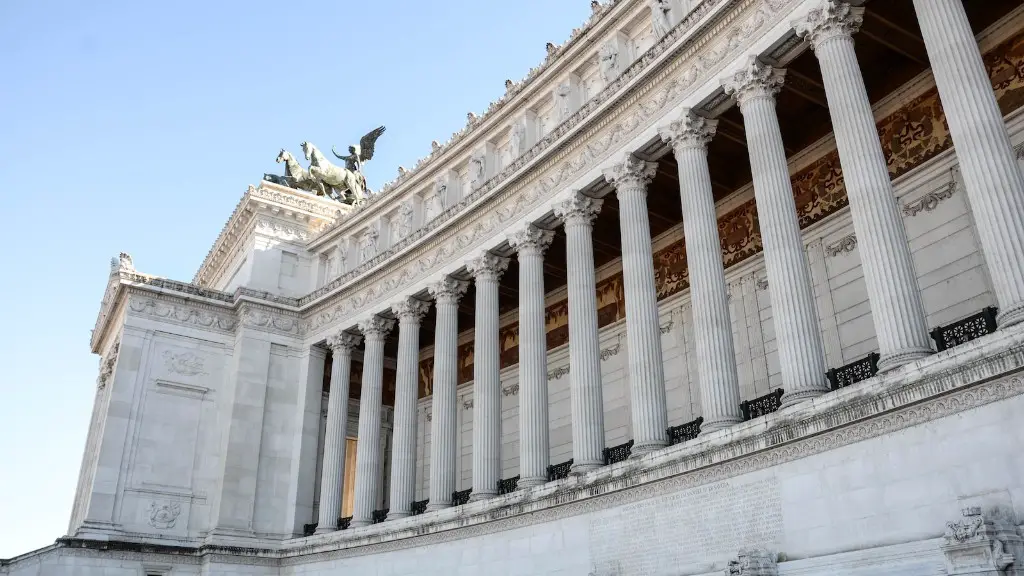The stadiums of Ancient Rome were a symbol of the city’s immense power. For centuries, they were the epicentre of the sporting events that were so important to Roman culture. The construction of these stadiums was a feat of engineering prowess and technological advancement, with massive crowds gathering in the amphitheatres to cheer their favourite gladiators to victory. But where did the idea of these stadiums come from?
The origin of the Ancient Roman stadium dates back to the 5th century BC, when the Greeks began building large, purpose-built spaces for their sporting festivals. The Greeks had a tradition of holding competitions and events in places like military bases and on roads, so the large stadiums were intended to provide a more permanent and suitable place for these events. This ancient Greek tradition was later adopted by the Romans, who began constructing their own stadiums all over the empire.
The stadiums of Ancient Rome were built to support a variety of sporting events, including public games and gladiatorial games. They were made up of tiered seating for spectators, a central playing field and a surrounding wall. The size and shape of the stadium often depended on the type of games played there. For example, gladiatorial games were generally held in a small, enclosed area, while chariot races were held in an oval arena.
The Romans were also meticulous in ensuring the safety and comfort of their spectators. To protect them from the elements, they provided awnings and sunshades, while a system of underground tunnels allowed spectators to move around the stadium without disrupting proceedings. For more important games, the seats were roped off into sections and allocated to specific social classes and dignitaries, ensuring that everyone had a comfortable and convenient place to watch the games.
The most impressive stadiums of Ancient Rome were the Colosseum, built by Emperor Vespasian in the 1st century AD, and the Circus Maximus, built in 6th century BC. Both stadiums were capable of accommodating hundreds of thousands of spectators and were used for a variety of events. They featured tiered seating with a central arena and running track, and were adorned with elaborate sculptures, statues and fountains.
The stadiums of Ancient Rome were designed as places of entertainment and celebration, as well as a means of displaying the might of the Roman Empire. They were a testament to the technological and engineering prowess of their builders, and remained in use for centuries. Today, many of these stadiums have been destroyed or fallen into disrepair, but their legacy lives on in the many arenas, amphitheatres and stadia that still bear testament to their remarkable achievements.
Architecture
The stadiums of Ancient Rome were feats of engineering and architectural genius. The architects and builders harnessed the natural features of the land, like the terrain and water sources, to create an amphitheatre-style structure that could accommodate vast crowds. They also made use of natural materials like polished stone, marble, granite and timber to construct grand entrances and porticoes, while colourful murals and reliefs decorated the exterior facades.
At the Colosseum, for instance, the Romans adopted elements of traditional Greek theatres, such as the three main tiers of seating, as well as their distinct curved shape. This gave the structure an attractive aesthetic and maximised its capacity. The Romans also made use of materials like travertine, limestone and tufa to create a sturdy and robust structure, while the complex network of tunnels and chambers beneath the stadium meant the gladiatorial games could run efficiently and safely.
The genius of the builders was further demonstrated by the drainage systems of these stadiums. These allowed for quick and efficient relief of water, enabling the games to be carried out without interruption, even in the worst weather. In the Colosseum, for instance, the Romans laid down a vast subterranean network of ditches, pipes and drains that were connected to the Tiber River and the sea.
The impressive architecture of the stadiums of Ancient Rome made them symbols of the power of the Roman Empire and set a standard that has since been admired and emulated by countless other civilisations.
Legacy
The stadiums of Ancient Rome have left a lasting legacy on sports and the entertainment industry. In the modern era, many arenas and stadia have adopted elements of the ancient designs, such as arcaded porticoes, tiered seating and ornate facades made from marble, granite and other materials. These features have helped to create an atmosphere of grandeur and spectacle, allowing the stadiums to become more than just places of sport, but also venues for music concerts, public shows and other events.
The stadiums of Ancient Rome were also the inspiration for many modern sports, such as boxing, wrestling and football, by providing a blueprint for how to construct a space for entertainment. In the modern era, these sports have become hugely popular around the world, and the stadiums of Ancient Rome have played a major role in this.
The stadiums of Ancient Rome also played an important role in the development of popular culture. They provided a space for people of all social classes and backgrounds to come together and celebrate their favourite sports or events. This sense of unity and togetherness has been passed down through the ages and is still evident in stadiums around the world today.
The influence of the stadiums of Ancient Rome can still be felt today, in the stadiums, arenas and stadia that have been built all over the world. They are a testament to the engineering and architectural genius of the Romans, and their legacy will continue to inspire and delight many generations to come.
Types of Games
The stadiums of Ancient Rome were used for a variety of events and activities, from mock battles and gladiatorial games, to chariot races and public spectacles. Gladiatorial games were, by far, the most popular, with huge crowds gathering in the stadiums to cheer on their favourite fighters. These events were brutally violent, but they captivated the Roman people and served as an effective distraction from the harsh realities of life in the empire.
Chariot racing was another popular event in Ancient Rome, with teams from all around the empire competing in 4-horse carriages around the stadium’s track. The races were intense and highly competitive, with the winning team being hailed as heroes by the crowds.The most popular races were the ‘Ludi Circenses’ or ‘Circus Games’, which were held in the Circus Maximus – the largest stadium in Rome, capable of accommodating 150,000 spectators.
As well as gladiatorial games and chariot racing, the stadiums of Ancient Rome were also used for mock battles, animal fights, theatrical performances, comedy shows and public executions. These events provided an entertaining respite from the day-to-day life of the Roman people, and were enthusiastically attended by all classes of society.
The stadiums of Ancient Rome have provided us with a vivid glimpse into the past. The events held there were a highly effective way for the Romans to celebrate their strength and display their engineering prowess. Their legacy still lives on, both in the modern architecture of stadia and arenas, and in the many forms of entertainment that have been adopted around the world.
Construction
The construction of the stadiums of Ancient Rome was a remarkable feat of engineering. The stadiums used a variety of materials, both natural and man-made, such as stone, brick, marble, timber and tile. The huge amphitheatres and oval arenas were designed to make the most of the surrounding landscape and terrain, while the tiered seating ensured maximum capacity and comfort for the spectators.
The Romans were also meticulous in their construction techniques. To ensure the structures were capable of withstanding the test of time, they employed advanced construction techniques, such as the arch and dome, and made use of elaborate foundation systems. To protect against the elements, the Romans used terracing, drainage systems and porticoes. The roofs were made from canvas and specially treated to keep out rain and the deserts to protect against the heat.
We can still see evidence of the Romans’ engineering prowess in the ruins of many of their stadiums. The Colosseum, for instance, is an impressive example of their technical ability, made all the more extraordinary for its age. It is an enduring testament to the ingenuity of the builders and engineers of Ancient Rome, and serves as a reminder that their legacy is still felt to this day.
Technology
Technology played a major role in the construction of the stadiums of Ancient Rome. In particular, the Romans made use of a variety of mechanical devices to assist in the building process. Cranes were used to lift and carry heavy blocks of stone, while winches and pulleys helped to move building materials around the site. The Romans also employed techniques such as the arch and dome in their construction, demonstrating their sophisticated understanding of mechanics.
The stadiums of Ancient Rome were also equipped with a variety of technological inventions. The Romans used sophisticated irrigation systems to provide water to the arenas, while they also built elaborate drainage systems beneath the stadiums. The Romans even installed hundreds of fountains in their stadiums, providing fresh water to spectators during sporting events and performances.
In addition to the engineering feats, the Romans also developed complex systems for regulating attendance and organising the seating. Spectators were allocated specific sections according to their social class, while a system of gates and tunnels kept the crowds orderly. The Romans also made use of novel devices, such as rope barriers and stone seating, to maintain the stadium’s architectural integrity.
The stadiums of Ancient Rome demonstrate the remarkable technological and engineering achievements of the Roman people, and their influence can still be seen in the modern stadiums, arenas and stadia around the world today.





